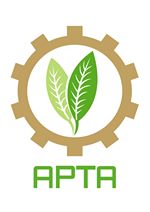Design of Table and Chairs for Packaging Tempe Chips Work Station for Reducing the Risk of Occupational Diseases in Putra Tunggal Home Industry Wonosobo
Ahmad Saifulloh Faqih(1), Guntarti Tatik Mulyati(2*), Wagiman Wagiman(3)
(1) Department of Agroindustrial Technology, Faculty of Agricultural Technology, Universitas Gadjah Mada
(2) Department of Agroindustrial Technology, Faculty of Agricultural Technology, Universitas Gadjah Mada
(3) Department of Agroindustrial Technology, Faculty of Agricultural Technology, Universitas Gadjah Mada
(*) Corresponding Author
Abstract
Home Industry Putra Tunggal Wonosobo is a tempeh chip industry whose production process is manual, so it can have a negative impact on worker ergonomics. Preliminary research was conducted by interviewing pain complaints and assessing work posture using the OWAS method. The tempeh chips packaging workstation was the workstation that had the most pain complaints at 67.86% (19 of 28 body parts) and the highest OWAS score at 4, so this was at high risk of experiencing musculoskeletal disorders. The next study used the NBM questionnaire to analyze the level of pain due to work and RULA for work posture. CATIA software was used to design tables and chairs, as well as assess the posture of the design results using the RULA method. Worker performance will be compared before and after using tables and chairs based on the level of body pain due to work (NBM) and work posture (RULA). The research results showed a decrease in the risk of work-related diseases by 80 and 78 to 40 and 44 (from high to low-risk levels) as well as a decrease in the RULA score from 7 (dangerous posture) to 2 (good posture).
Keywords
Full Text:
PDFReferences
Calzavara, M., Glock, C. H., Grosse, E. H., Persona, A., Sgrabossa, F., 2017. Analysis of Economic and Ergonomic Performance Measures of Different Rack Layouts in an Order Picking Warehouse. 111, 527-536. Doi: https://doi.org/10.1016/j.cie.2016.07.001.
Dewi, N.F., 2020. Identifikasi Resiko Ergonomi dengan Metode Nordic Body Map Terhadap Perawat Poli RS X. 2, 125-135. Doi: https://doi.org/10.7454/jsht.v2i2.90.
Karhu, O, Harkonen, R., Sorvali, P., Vepsalainen, P., 1981. Observing Working Postures in Industry: Examples of OWAS Application. 12, 13-17. Doi: https://doi.org/10.1016/0003-6870(81)90088-0
Karhu, O., Kansi, P., Kuorinka, I., 1977. Correcting Working Postures in Industry: A Practical Method for Analysis. 8, 199-201. Doi: https://doi.org/10.1016/0003-6870(77)90164-8.
McAtamney, L., Corlett, E.N., 1993. RULA: a Survey Method for the Investigation of World-Related Upper Limb Disorders. 24, 91-99. Doi: https://doi.org/10.1016/0003-6870(93)90080-S.
Nuraidah, S., Uslianti, S., Rahmahwati, R., 2022. Perbaikan Postur Kerja dengan Metode QEC dan RULA untuk Mengurangi Terjadinya Musculoskeletal Disorders di CV. Makmur Jaya. 6, 48-55. Doi: https://jurnal.untan.ac.id/index.php/jtinUNTAN/article/view/52593
Purnomo, H., 2013. Antropometri dan Aplikasinya, 1st ed. Graha Ilmu, Yogyakarta.
Sutalaksana, I.Z., Widyanti, A., 2016. Anthropometry Approach in Workplace Redesign in Indonesian Sundanese Roof Tile Industries. 53, 299-305. Doi: https://doi.org/10.1016/j.ergon.2016.03.002.
Sutari, W., Yekti, Y.N.D., Astuti, M.D., Sari, Y.M., 2015. Analysis of Working Posture on Musculoskeletal Disorders of Operators in Stamp Scraping in ‘Batik Cap’ Industry. 4, 133-138. Doi: https://doi.org/10.1016/j.promfg.2015.11.023.
Thorbecke, W., 2018. Investigating ASEAN’s Electronic and Labor-Intensive Exports. 55, 58-70. Doi: https://doi.org/10.1016/j.asieco.2017.08.002.
Tiogana, V., Hartono, N., 2020. Analisis Postur Kerja Menggunakan REBA dan RULA di PT. X. 3, 9-25. Doi: https://doi.org/10.28932/jis.v3i1.2463.
Wahyudi, M.A., Dania, W.A.P., Silalahi, R.L.R., 2015. Work Posture Analysis of Manual Material Handling Using OWAS Method. 3, 195-199. Doi: https://doi.org/10.1016/j.aaspro.2015.01.038.
Wignjosoebroto, S., 2000. Ergonomi Studi Gerak dan Waktu: Teknik Analisis untuk Peningkatan Produktivitas Kerja, 1st ed. Penerbit Guna Widya, Surabaya.
Zhang, W., Fan, S., Xiong, J., Chen, S., 2018. A Biobjective Model for Manual Materials Handling with Energy Consumption Being Accounted For. 2018, 1-11. Doi: https://doi.org/10.1155/2018/3474352.
Zulkifli, 2010. Analisis Stasiun Kerja Pembuatan Kerupuk Berdasarkan Metode OWAS (Studi Kasus: Home Industri Dua Saudara). Universitas Islam Negeri Sultan Syarif Kasim Riau, Pekanbaru.
Article Metrics
Refbacks
- There are currently no refbacks.
Copyright (c) 2024 Ahmad Saifulloh Faqih, Guntarti Tatik Mulyati, Wagiman

This work is licensed under a Creative Commons Attribution-ShareAlike 4.0 International License.









